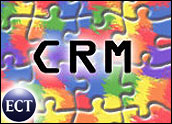
A few weeks ago, I started writing about what I see as the post-CRM world. I think it is becoming clear that front-office automation is moving past the definition of CRM that we have become accustomed to. As I look around the industry, there is a perceptible difference between what software is and what it does, which goes beyond CRM.
I am not talking about the hosted/on demand/software-as-a-service phenomenon. At the end of the day, that’s important — but it’s all about the delivery mechanism, not what the products help us do. Beyond the delivery mechanism is where things are getting interesting. New application vendors take SaaS in stride as they deliver solutions to problems that, in many cases, we didn’t even know we had. It’s those solutions and the problems that they solve that got me thinking.
While we’re definitely in a post-CRM era, believe it or not, things related to CRM are not the drivers — they are simply symptoms of a larger movement, which I call “post-high tech.”
High Tech’s Legacy
Remember high tech? It started with mini-computers and with putting a whole CPU on a chip. The excitement caused by that breakthrough in the technology and finance worlds was palpable. With a cheap CPU on a chip, all of a sudden all kinds of mechanical and electrical devices could be optimized with embedded CPUs — from your car’s engine to household gadgets. Of course, optimization came with a cost. One unfortunate by-product of the euphoria that came with embedded CPUs was the VCR clock, but that’s a story for another day.
Cheap computing followed, and it accelerated every aspect of business. For example, the mergers and acquisitions mania of the 1980s may have been aided by PCs and spreadsheets that let people play out all sorts of “what if” scenarios as corporate raiders recalculated company value and interest rates on junk bonds at will.
It took quite a while for the PC to help corporations straighten out the back office, and when they were done, attention naturally turned to the front office where similar techniques were applied. With fast availability of data and query capability, we found it possible to accelerate all kinds of customer interactions and to make them more accurate.
Sales force automation was introduced primarily as a way to accelerate behind-the-scenes sales activities so that representatives could spend more time with customers — in effect, optimizing an old process. SFA was, and still is, sold on the promise of increasing productivity — allowing more focus on the customer interaction part of the job.
Running Smoother
Up to this point, we have used technology in CRM simply to reduce waste and inefficiency. Like the optimized car, the engine runs better, but it still burns increasingly expensive fossil fuel and contributes to global warming. Optimization — that’s the limit of high tech; in the post-high-tech world, we’re expecting cars that run on clean hydrogen fuel cells.
Similarly, now that we’ve optimized our business processes, we need to re-involve the customer. It’s no secret that while corporations have been working hard to optimize their customer-facing processes, the natives have been getting restless. If you are in doubt, here are some tidbits accumulated from the last year:
- According to a 2004 Gallup International and World Economic Forum study of 36,000 people from 47 countries, 48 percent had little or no trust in global companies, and 52 percent had little or no trust for national companies.
- At the same time, New Product News predicted that of the 36,000-plus new products that hit the shelves in the U.S. in 2005, 80 percent will fail — largely because vendors do not understand their customers’ needs to any significant degree.
- The loss of customer loyalty is nearly epidemic, and numerous thought leaders have commented on it.
Focusing on the Customer
All that brings me back to the post-high-tech, post-CRM world. In all the hoopla around the efficiency craze of the last couple of decades, we’ve pretty much forgotten about the customer. If we are going to take business to another level, it won’t be because we made our auto-dialers faster or drilled the best closing techniques into sales representatives.
In the post-high-tech era, the next level of business is about listening to the customer, and the value of technology in that scenario will be in reducing the big job of capturing customer input and collating it to make it accessible to people who design, make and market products. New technology will also enable us to invent and profitably deliver new services that customers need, but which have either been too expensive to deliver or have not even been thought up yet.
Each year, I see a lot of new companies with different ideas of software solutions, and the best seem to be focusing on how to leverage technology to do the unexpected on the way to getting the customer to say, “Wow!”
That’s what I mean when I talk about the post-CRM and now, post-high-tech world.
Denis Pombriant is a well known thought leader in CRM and the founder and managing principal of the Beagle Research Group, a CRM market research firm and consultancy. Pombriant’s latest white paper, Adding Sales to the Call Center Agenda, summarizes his recent research in the call center industry. In 2003, CRM Magazine named Pombriant one of the most influential executives in the CRM industry. Pombriant is currently working on a book to be published next year. He can be reached at [email protected]
























































